- MMA & Combat Sports, Resistance Training
How to Increase Explosive Power For Boxing and MMA
- By Phil Daru
- On April 6, 2021
How to Increase Explosive Power for Boxing and MMA
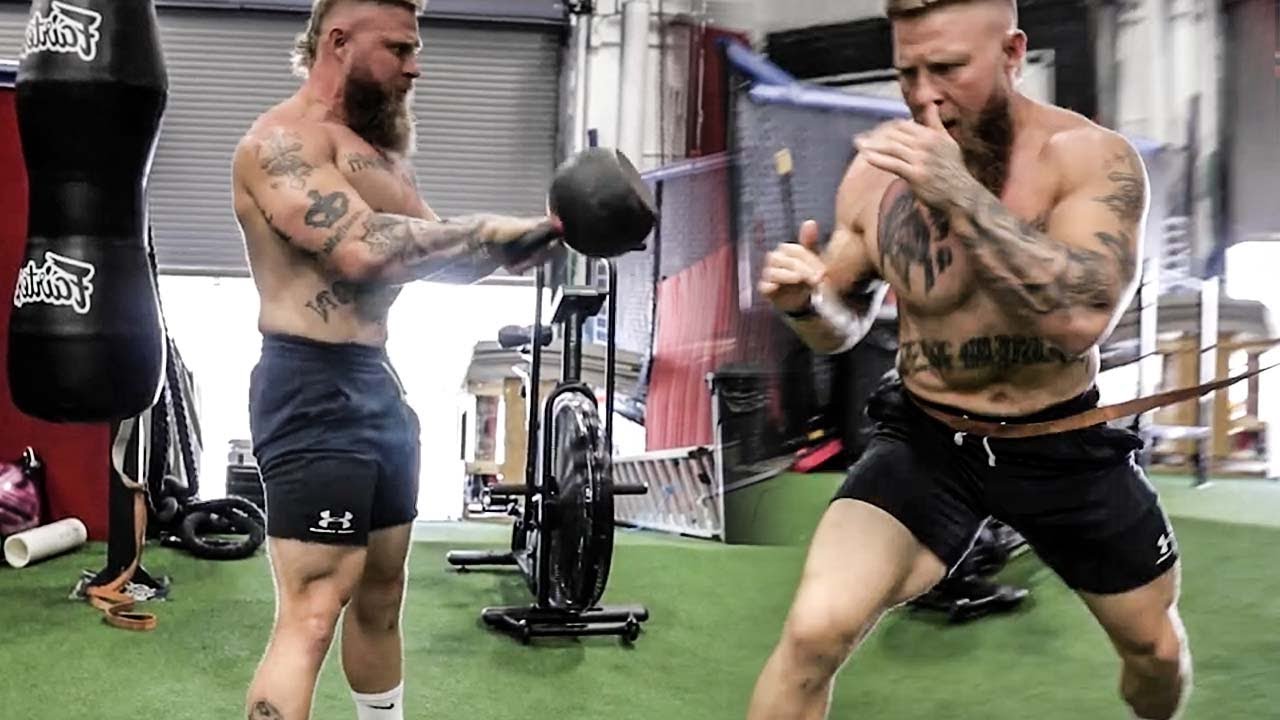
The traditionalists say that explosive power is something that is God-given. It isn’t something that can be developed. You either have it or you don’t.
The traditionalists also tell you that lifting weights is bad for your performance.
Lifting is a no-no.
The traditionalists are wrong.
Wrong in many ways.
Right now, there are fighters all across the boxing and UFC world working to increase their explosive power for their respective sports. And these guys are going to have extra firepower when they get into the ring or cage compared to their competition. They’re going to have that extra knockout power, more aggression behind their takedowns, they’ll have man strength.
Do you want a competitive edge like that?
Then the next question you need to the answer to is:
How do I increase my explosive power?
That’s what I’m about to share with you – EXACTLY how to increase explosive power for boxing and MMA performance.
No B.S.
No gimmicks.
Just a straightforward, step by step, how to increase your explosive power so you’ll have the firepower to sleep your competition.
Before we jump in, if you want to skip trying to piece together a program for yourself, check out Heavy Hitter. Heavy Hitter isn’t JUST for boxers. It’ll work for MMA fighters too. And it’s made up of methods and strategies that have been time-tested, proven to work in the field, and backed by science. Hundreds of guys are already seeing great results with it. And right now, you can get Heavy Hitter for a 50% blog reader discount.
Alright, let’s jump in.
The Five Layers of Power
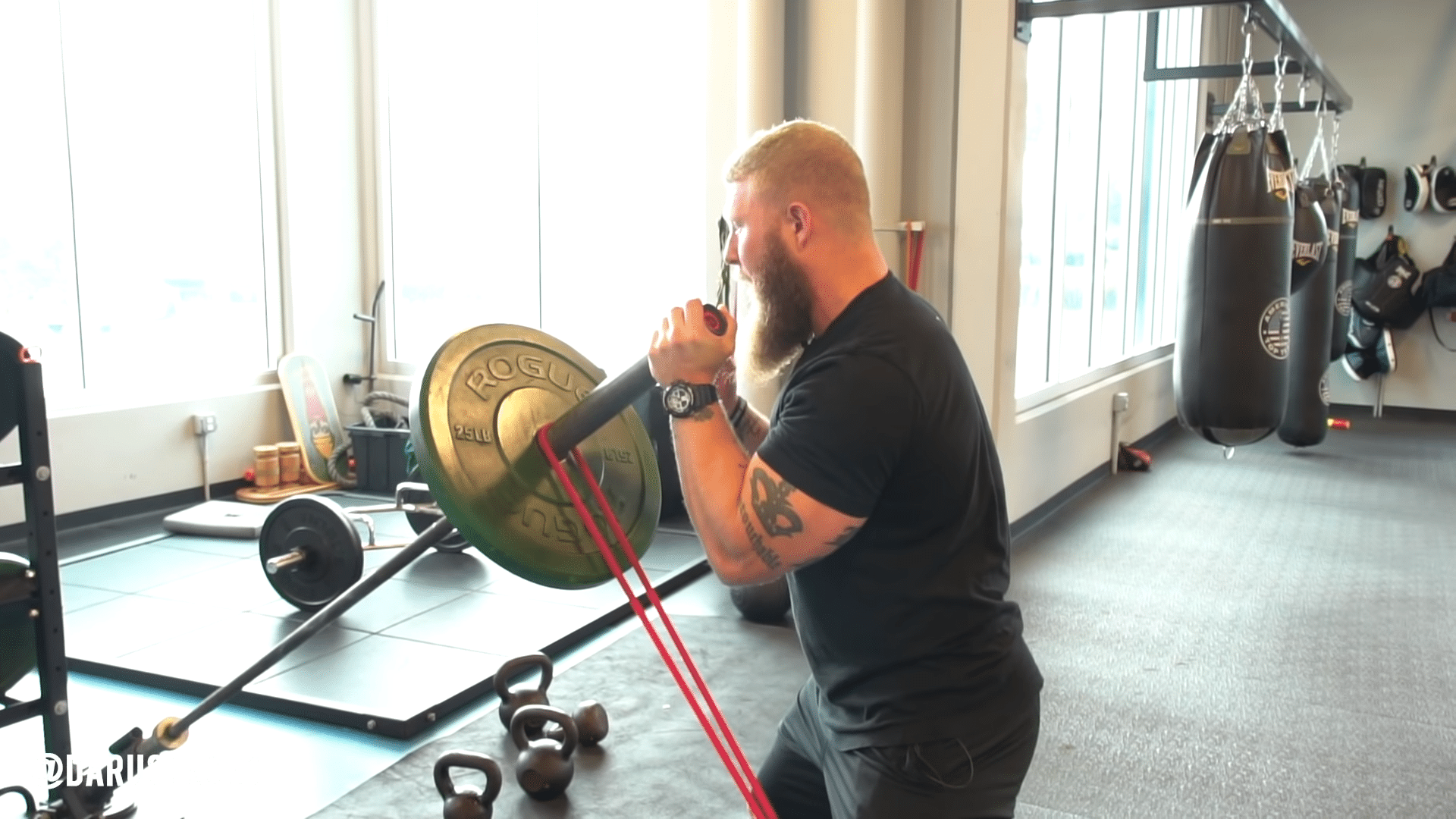
I already have a post on this topic, but I figured I’d mention it here because I’m going to focus strictly on power in this post.
Power is not an isolated component. Power is made up of multiple layers that all work cohesively to allow you to generate force faster. This is why get frustrated when I see coaches who train for power in a segmented way.
The body is a unit, and it should be trained as such.
In this way, you can think of power as a pyramid.
At the very bottom of the period is technique.
Trying to throw bombs without good technique is like trying to put a powerful Lamborghini engine in a golf cart… The golf cart’s infrastructure isn’t built to handle that kind of power, and it’s going to crumble to pieces. In the same way, if you’re trying to add power behind your hands without sound technique, you’re going to do more damage to yourself than your opponent.
Then there’s stability… More specifically… Core stability.
When you throw a punch, force is generated from your legs. That force transfers through the core, through the shoulders, out of your knuckles, and into your opponent. Thing is, if you’re unstable, you will leak force in this process. This will result in weaker punches.
So if you want to increase explosive power, you need to tighten up the core.
After that, you have mobility.
Mobility helps you maintain joint centration and structural integrity. Without this, you won’t be able to stack your joints effectively. And an inability to stack the joints effectively leads to lower power output. This is because joints are meant to be stacked for optimal function. But when you have a muscular imbalance pulling a joint out of position, your function will be anything but optimal.
Then you have strength.
I wrote about strength in-depth in this blog post. For now, you just need to know that strength is the trait that will allow you to produce more force. It’s an integral part of the power equation.
The lack of strength training may be the reason why so many traditionalists believe that you either have power or you don’t.
Finally, we sprinkle on power, the topic of today’s blog post.
How Do We Increase Explosive Power for Boxing and MMA?
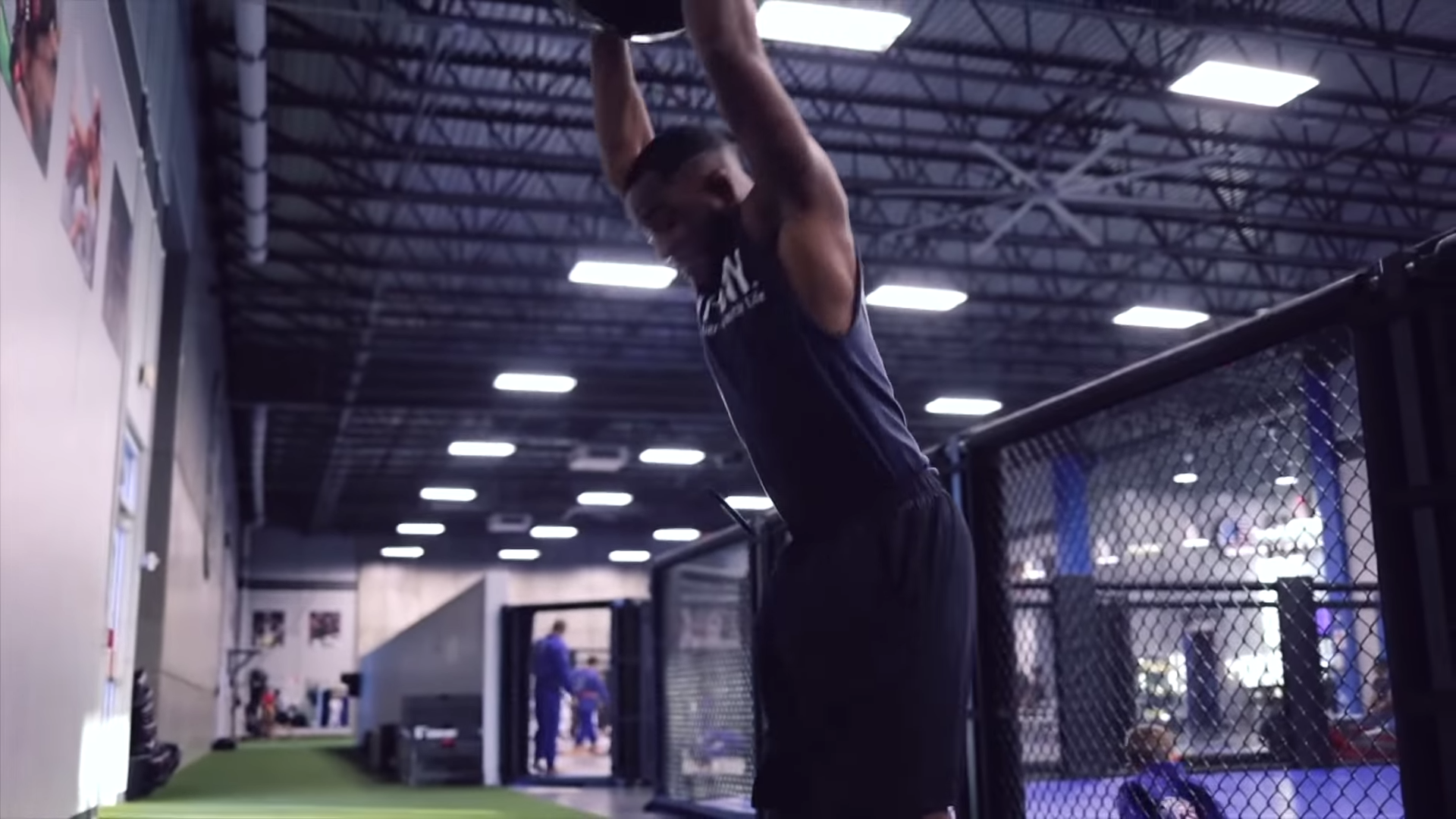
Power is the product of force times velocity. Increasing either of those variables will result in an increase in power.
I’m sure you’ve seen powerlifters who can deadlift 800 pounds, but aren’t very powerful at all. Then you have guys who are built like broomsticks, but pack the power of an angry polar bear behind their punches. Part of the reason for this comes down to their specialized training.
Powerlifters train strictly strength-speed and maximal strength while the broomstick-built fighter trains strictly speed. Sometimes speed-strength as well.
However, if the powerlifter trained down the force-velocity curve, and the broomstick-built fighter trained UP the force-velocity curve, both of them would increase explosive power.
If you don’t know, the force-velocity curve shows the relationship between force and velocity. It has five training zones that display the different qualities one is working at different intensities.
If you look below, you can see that the higher the intensity, the slower the movement will be performed. The lower the intensity, the faster the movement will be performed.
And if it wasn’t clear, if you stick to training in one zone of the curve, your performance will only increase in that section.
So, as powerlifters continue to perform one rep max after one rep max, their force production increases, but they’re strictly training slow muscle contractions.
If your goal is to increase explosive power, you should be training with lower intensities and moving those weights fast.
In other words, train the different zones of the force-velocity curve if you want to increase explosive power for boxing and MMA.

At the top of the force-velocity curve, you have maximal strength. Maximal strength consists of movements performed in the 90-100% range. When you’re performing a one or two rep max, you’re training in this zone. And you DO need to train maximal strength if you want to increase explosive power for MMA. But you need to do it in the right context. I talk about that in-depth in this blog post.
Next, you have strength-speed. Strength speed consists of movements performed in the 80-90% range. These movements are usually performed in the 3-5 rep range and consist of your traditional strength lifts – the bench press, squat, and deadlift.
To be clear, these movements can be trained lower down the force-velocity curve. However, they fall into the maximal strength and strength-speed zones the way most people train them.
Moving further down, you have power.
Now, this zone doesn’t consist of movements you’d typically associate with explosive power. The movements in this zone are typically performed at 30-80% of your one rep max. These movements can consist of Olympic lifts, the traditional strength lifts performed at lower intensities (typically with accommodating resistance), weighted plyometrics, and sled pushes, pulls, and drags.
While these movements play a hand in increasing your explosive power, they’re not top of mind when you think of power training for most.
Going down even further, we have speed-strength.
Speed-strength consists of movements like ballistics, weighted plyometrics, plyometrics with slow countermovements, and more. And this is one of the zones that will really help you increase explosive power for boxing and MMA performance.
Finally, we land at speed.
Speed is pretty self explanatory. The movements in this zone are performed at intensities of 0 to 30% of your one rep max.
In other words, these movements are going to be performed fast.
Jumps, sprints, connected jumps, reactive jumps, and more can fall into this zone.
It’s also worth mentioning that there are “overspeed exercises”. These are movements in which an explosive movement is assisted in some way.
The most commonly used example of an “overspeed” exercise is an assisted jump in which the athlete holds onto a band and uses the resistance from that band to enhance their jump. Another is sprinting on a downward slope.
Now, let’s take a look at some more practical methods to increase your explosive power.
Plyometrics to Increase Explosive Power
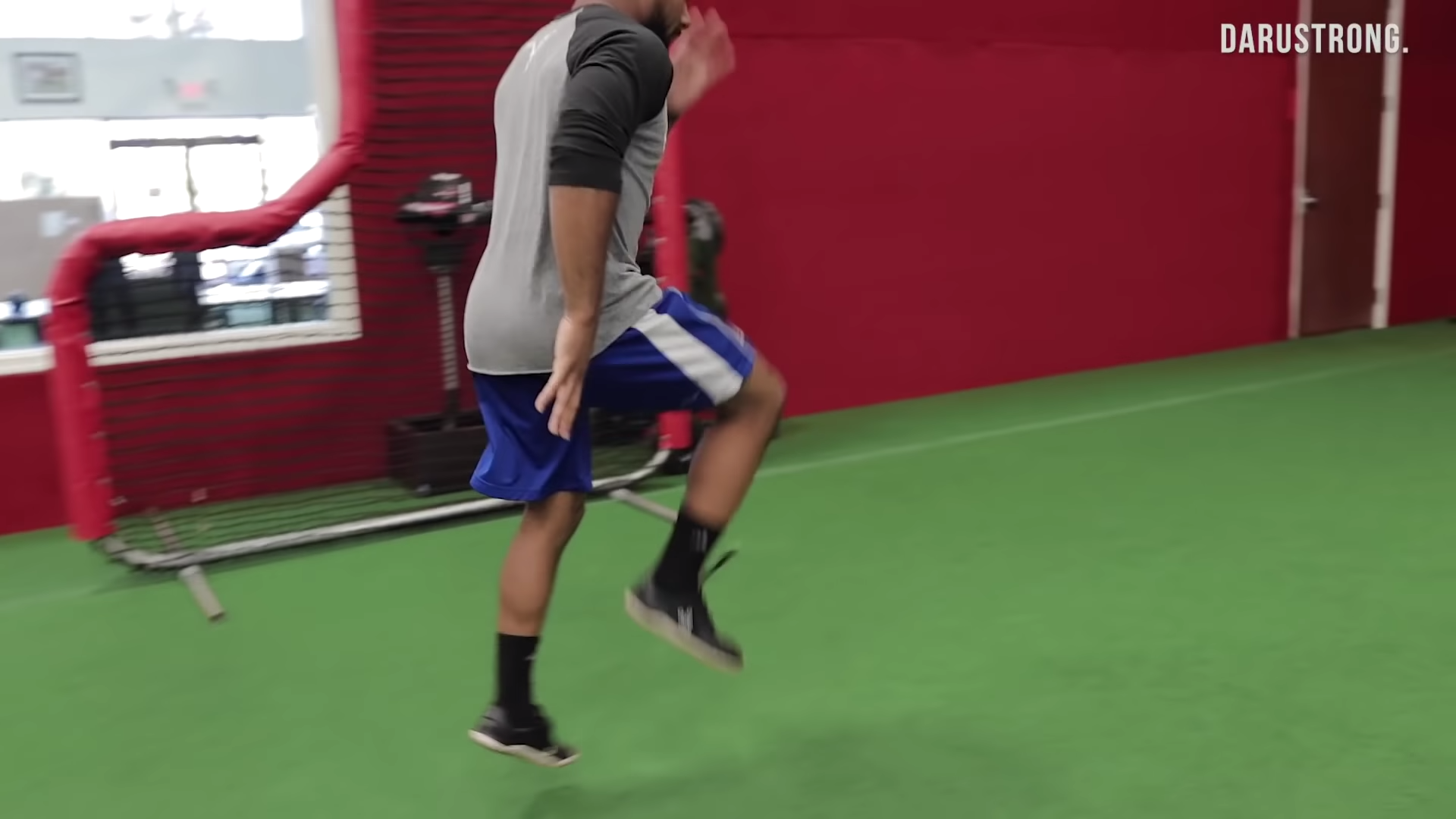
Plyometric training is one of the go-to training methodologies to increase explosive power.
Plyometric training is training that consists of eccentric movements followed by a quick and explosive concentric movement or rebound. Plyometric training can also be defined as reactive training in which a muscle is put on stretch then quickly contracted to create an explosive movement.
The funny thing about plyometric training is plyometric training is traditionally overlooked and undervalued by coaches and fighters alike.
Aside from the standard box jump, most fighters don’t perform plyometrics because they don’t look at the body as a unit. They think that because you use your upper body to throw punches and strikes, you don’t need explosive power in your legs.
Big mistake.
Movements like broad jumps, tuck jumps, pogo jumps, and power skips can go a long way in increasing explosive power for boxing and MMA performance. And these movements develop different functions and joints of the lower extremities.
That said, I’m going to share some of my favorite plyometric exercises to increase explosive power for boxing and MMA performance:
1. Pogos
Pogos are a low level plyometric that are great for improving elasticity in the ankle complex. The ankle is often overlooked when plyometric training, however it’s important to develop its force production and absorption capabilities for the simple fact that it’s the first joint in contact with the ground.
Here’s How to Perform Pogos:
- Start with the feet hip width
- Keep the knees relaxed
- Using some arm momentum and force from the ankles, push the floor away
- Land softly and quickly propel yourself back up again
- Remember, the emphasis is on the ankle, so try to limit knee involvement
- Perform for desired time
2. Broad Jumps
Broad jumps are another great plyometric to work the posterior chain. This plyometric heavily emphasizes triple extension, and specifically, hip extension which is lacking in most fighters.
Broad jumps are extremely versatile, they can easily be progressed and regressed, and they’ll play a direct role in increasing the power of your strikes – whether that’s your punches or your kicks.
Here’s How to Perform Broad Jumps:
- Stand tall with the feet hip width apart, arms up
- Swing the arms down and simultaneously push the hips back and bend the knees slightly
- Quickly swing the arms up, extend the hips and knees, and jump as far horizontally as possible
- Land softly and repeat for desired reps
3. Power Skips
Power skips are great for beginners and advanced athletes alike. They can be performed for height and distance with different carryovers to your explosive power.
They’re also great to build power endurance if you perform them for longer distances or durations.
Here’s How to Perform Power Skips:
- Start in standing position
- Take a step and push off that stepping leg
- Lift your opposite knee into the air
- Lift the arm opposite the lifted knee up by your cheek
- Land softly and repeat on the other side
- Repeat for desired reps
Weighted Plyometrics

Many athletes and coaches get weighted plyometrics wrong.
As I wrote above, plyometric movements should generally be reactive in nature. They should be a quick stretch, or eccentric movement, followed by a powerful and explosive rebound or concentric movement.
However, I see many coaches and athletes loading up their plyometrics with weights that are very heavy, and in turn, make the movement slow.
The goal is a fast contraction if you want to increase explosive power.
That said, I generally like to stick with weights that are around 10-15% of an athletes body weight depending on the movement.
And usually, no more than 8-12 pounds for males, 6-8 pounds for females.
There are some exceptions, such as the trap bar deadlift jumps I’m about to share below. However, when it comes to using dumbbells, medicine balls, and even barbells for weighted plyometrics, I stick to the 10-15% rule.
Here are some of my favorite weighted plyometric movements to increase explosive power for boxing and MMA:
1. Trap Bar Deadlift Jumps
Trap bar deadlift jumps are one of my favorite plyometrics in general for multiple reasons. For one, they’re safe. Unlike squat jumps with a barbell, these don’t put your spine in a vulnerable position.
They’re also very accessible for most lifters.
On top of all that, they’re very effective for increasing explosive power.
It’s important to remember that quality is key here. Especially with weighted plyometrics, you don’t want to get sloppy or you risk injury.
It’s also important that you come to a dead stop between each jump for this movement. This is so you have an opportunity to reset, get in the right position, and jump again.
Here’s How to Perform Trap Bar Deadlift Jumps:
- Step into the trap bar and place your feet hip width in the middle of the trap bar
- Push the hips back slightly and sink the butt down to grab the middle of each handle
- Pin the shoulders down and back, create tension in the hips, and propel yourself off the ground
- Bring the bar to a dead stop and repeat for desired reps
2. Weighted Box Jumps
Weighted box jumps are another highly versatile movement. There’s a ton of different variations you can use to elicit different adaptations. You can perform them with no counter movement to work the concentric portion of the movement. You can also make them more reactive by dropping from a box and jumping onto another box. I’ve also seen coaches hold the medicine ball overhead to work on keeping the core tight while performing explosive movements.
There are so many options with this one.
Ballistics to Increase Explosive Power
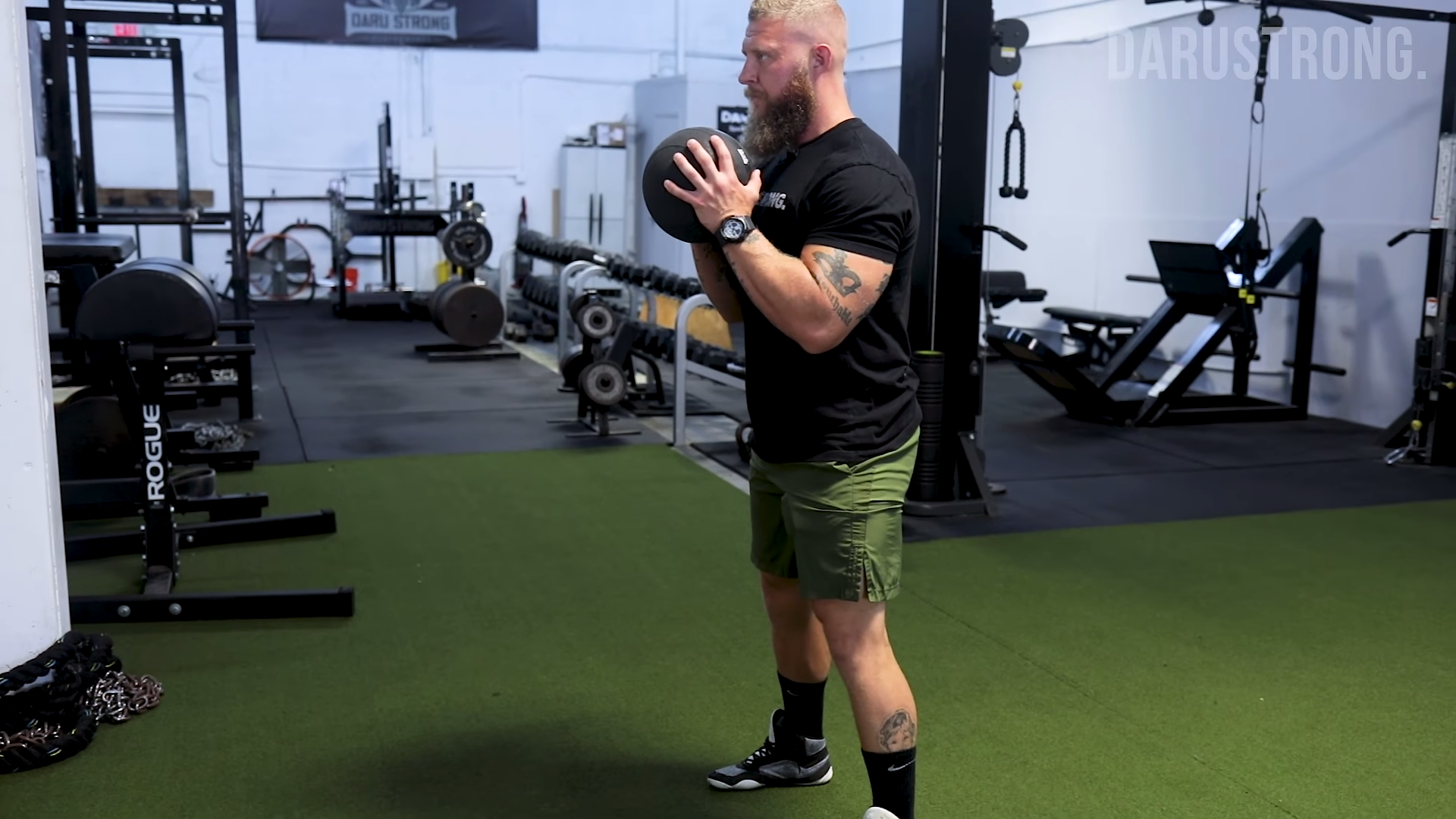
Ballistic training is one of my go-to training methodologies for power.
In simple terms, ballistic training is training in which the athlete throws a weight to improve explosive power.
Some say that weighted plyometrics fall under this category, however the thing that sets ballistics apart from plyometrics is the concentric-focused nature of ballistic training.
If you don’t know, the concentric portion of movement is the portion of movement in which the weight is being actively overcome. It’s the “up” portion of a squat, deadlift, and bench press.
Ballistics generally emphasize this portion of movement while plyometrics emphasize the eccentric portion of movement followed by a rapid rebound, or contraction of the muscles. This shines through in the movements I’m going to share below.
In order for ballistics training to be effective, you should choose a weight that allows you to perform the movement quickly, sharply, and forcefully. This way, we’re focusing solely on increasing explosive power, stimulating those fast twitch muscle fibers.
In less words, our goal is to create the greatest amount of force in the shortest amount of time.
And if our goal is explosive power for boxing or MMA, our ballistic training should be specific to the sport.
That said, here are some of my favorite ballistic movements to increase explosive power for boxing and MMA:
1. Fight-Specic Medball Throw
The fight-specific medball throw is designed to pack more power behind your cross. It’s very specific to the fight game in that you’ll be standing in your fight stance, generating force from your legs, and transferring that force through your body to push the medball towards the wall with as much power as possible.
Remember to maintain quality.
You don’t want to perform sloppy reps. Keep things sharp, clean, and intentful.
Imagine yourself throwing the ball through the wall. Not just getting the ball to the wall.
Here’s How to Perform the Fight-Specific Medball Throw:
- Start in your fight stance perpendicular to the wall
- Hold the medball up by your chin
- Generate force through the legs, core, and out the upper extremities as you throw the medball towards the wall
- Repeat for desired reps on both sides
2. Medball Rotational Slam
Medball rotational slams come with a landslide of benefits.
For starters, you’re increasing explosive power, and conditioning the core to contract explosively.
You’re also increasing your coordination and balance through slamming the ball asymmetrically.
Here’s How to Perform the Medball Rotational Slam:
- Start with the feet hip width
- Pick up the medicine ball
- Quickly lift the medball overhead while extending your hips and knees
- Rotate and slam the ball down outside of your right foot
- Repeat on the other side
- Continue until you reach your desired reps
3. Medball Side Toss
The medball side toss is a great movement to develop the rotational power that’s imperative to boxing and MMA.
A great amount of the force generated for this movement comes from the legs and core, as your arms are simply levers in this movement.
Here’s How to Perform the Medball Side Toss:
- Start with the feet just outside of hip width standing perpendicular to the wall
- Load the medicine ball by your back hip
- As you do, bend the knees slightly
- Generate force through the ground, extend the knees, and rotate the core towards the wall as you hurl the medicine ball towards the wall
- Repeat on both sides for desired reps
Accommodating Resistance

I wrote about accommodating resistance in this blog post, but I’d be wrong to not mention it here.
Accommodating resistance is adding tension throughout the entire range of a movement.
As an example, in a squat, the movement gets easier as you reach lockout. Naturally, you begin to decelerate as you reach the easier portions of the movement. This is where accommodating resistance comes in – adding bands or chains evens out force distribution through the entire movement, forcing you to accelerate through the entire range of motion.
This can be beneficial for your explosive power as well.
Especially when you perform movements like trap bar deadlifts, sumo deadlifts, and squats at lighter intensities with accommodating resistance.
I won’t go into the movements I like to perform with accommodating resistance, as they’re pretty vanilla – squat, trap bar deadlift, bench press, and more… But for now, know that accommodating resistance can be a powerful tool in increasing your explosive power.
Complex Training
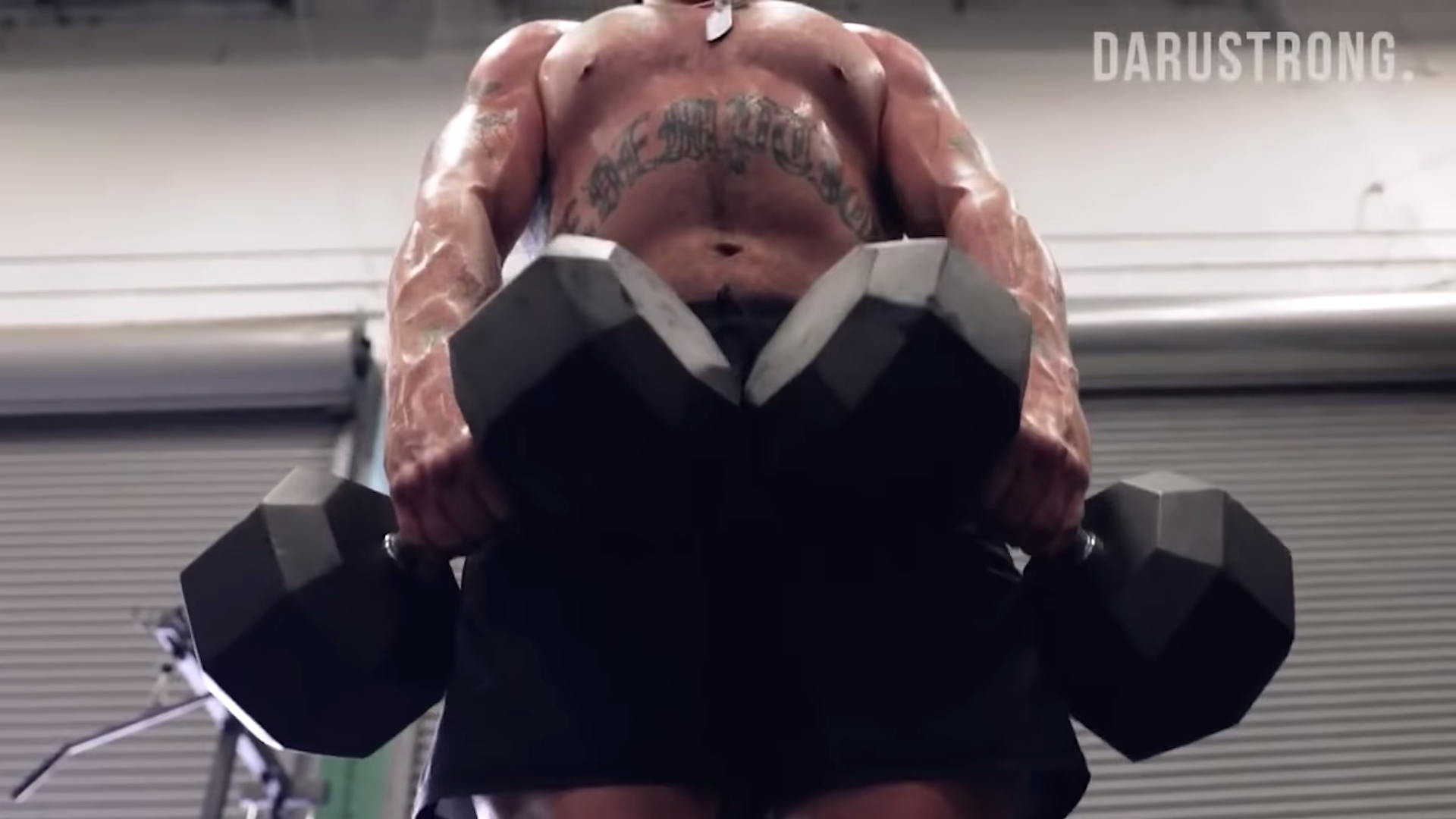
Complex training is another modality that can help you increase your power.
Complex training is the process by which you perform a heavy, resisted movement followed by anexplosive movement.
An example of this is performing a heavy squat followed by a sprint.
The idea behind this is that the heavy lift excites the nervous system. You can then use that excited nervous system to perform the explosive movement faster and with more power.
So in a way, complex training can turn your strength into more usable power.
Contrast Training

Contrast training is the process of performing a heavy movement followed by a plyometric movement of the same movement pattern.
An example of this is performing a heavy squat followed by a box jump, or a sled push followed by a sprint.
This method rests on post-activation potentiation.
Post-activation potentiation is the enhancement of a muscle or muscle group’s capabilities following a maximal strength lift.
The gist of it is that your heavy, near-maximal lift enhances the contraction capabilities of those muscles. When you follow this near-maximal lift with an explosive movement, those enhanced contraction capabilities are applied to the explosive movement.
In effect, this method tricks the muscles into firing with more power.
Another way you can use this method is by pairing an overcoming isometric movement with an explosive movement.
If you don’t know, overcoming isometric is when you use maximum effort to move an immovable object. Examples of overcoming isometrics are deadlifting into pins, squatting into pins, and benching into pins.
This not only increases your motor unit recruitment for the explosive movement that follows, but it also checks the box of being a maximal strength lift, as you’re exerting your maximal strength to move that immovable object.
Some studies have shown that performing overcoming isometrics results in as much as an 8.6% increase in peak power immediately following the movement.
Do Olympic Lifts Increase Your Explosive Power?
Olympic lifts can play a hand in increasing explosive power. Olympic lifts are fast, powerful, and explosive in nature. They also develop the muscles of the posterior chain, key muscles in your power output.
However, I don’t use them much.
Why?
I mainly work with fighters. And 99% of fighters have imbalances that make Olympic lifts difficult to perform. These imbalances mostly lie in the shoulder complex, meaning it would be difficult and even harmful to get them in the right positions to perform Olympic lifts.
This isn’t to say I workaround or ignore their imbalances. I’d just rather use my limited time with them to perform movements they have the capability to perform instead of spending time I could be using increasing their explosive power teaching them technique and hammering away at mobility drills.
The time in camp is better spent performing movements they have the capability to perform.
How Many Reps Should You Perform for Explosive Power?
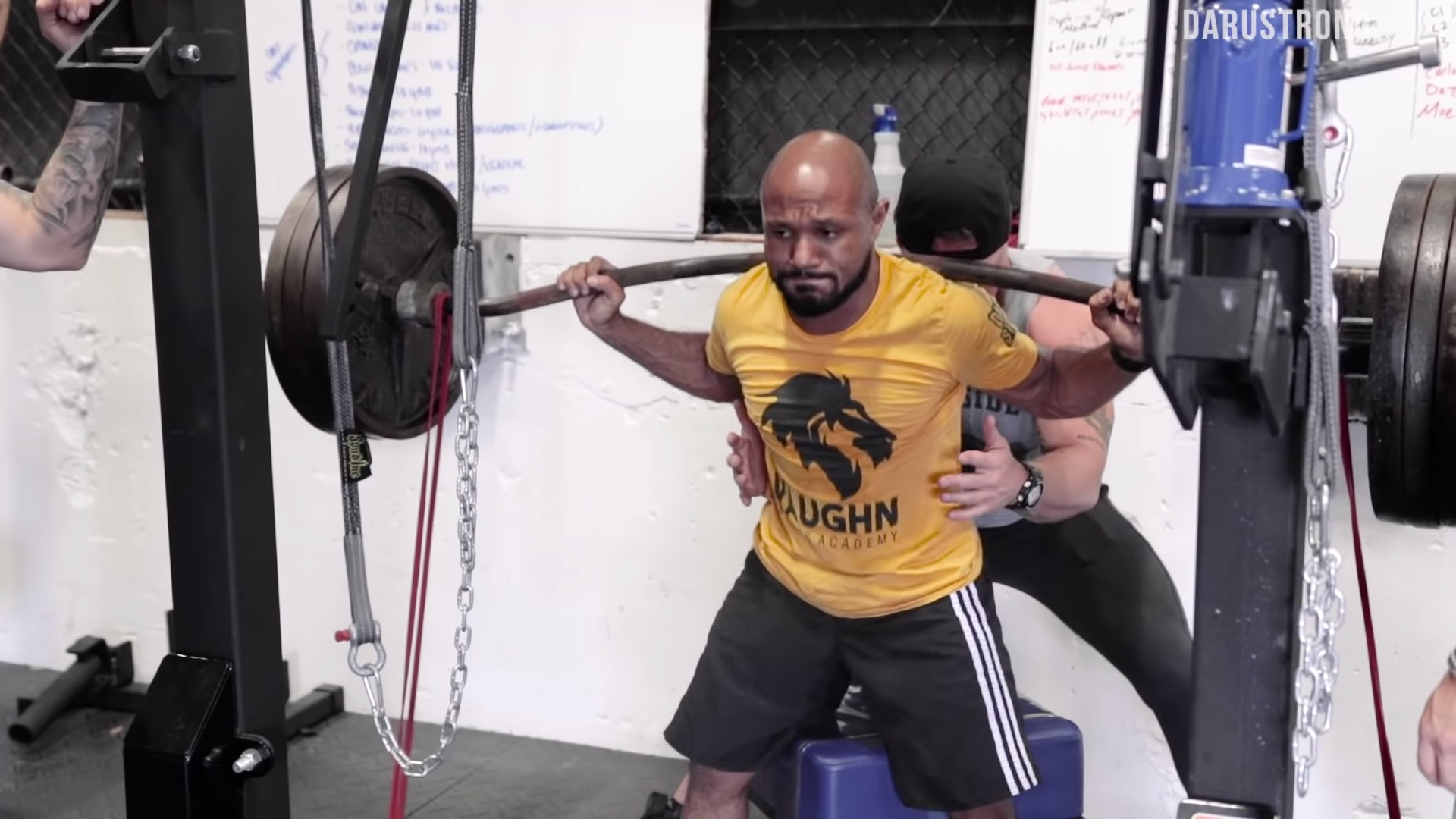
Your focus should be on quality over quantity when you’re trying to increase your explosive power.
Sets of six or more are big no-no’s simply because you don’t want to be fatigued when you’re performing your power movements (unless you’re trying to enhance very specific qualities).
Keep the reps low, no more than five.
And make sure you’re adequately rested in between sets so you can perform the movement with the highest quality, sharpness, and intention.
It’s harder to break a bad habit than create a good one.
When Should Power Exercises Be Performed?
Power exercises should generally be performed directly after your warm-up and mobility.
There are two reasons for this.
The first is that explosive power exercises are highly neurologically taxing. This means that explosive power exercises are taxing on the nervous system. And performing them after you’re already shaky from your workout would mean less quality and intent.
If power is the priority, you don’t want to perform your power exercises when you’re gassed.
The second reason that power exercises should be performed first is that quality is of the utmost importance when it comes to power training.
Again, it would make sense to perform movements that rely heavily on sharpness and intent at the end of the training session.
Want to Learn How to Become a Better Coach?
If you’re reading this and you are currently an aspiring coach, I want to help you become world-class.
My team and I currently have a few slots open for free discovery calls with aspiring coaches.
On the call, we’ll talk about your current struggles, the challenges you’re facing, your goals, and your aspirations for the future. We’ll also put you on the fastest track possible to achieving your goals and cementing yourself as the go-to coach in your area.
Why am I doing this?
Because I remember when I was an aspiring coach. I remember all the questions I had. The confusion I faced.
And I sure as hell wish I had someone to guide me.
It’s not everyday a world class coach knocks on your door and offers to give you free guidance.
Book your free discovery call below:


